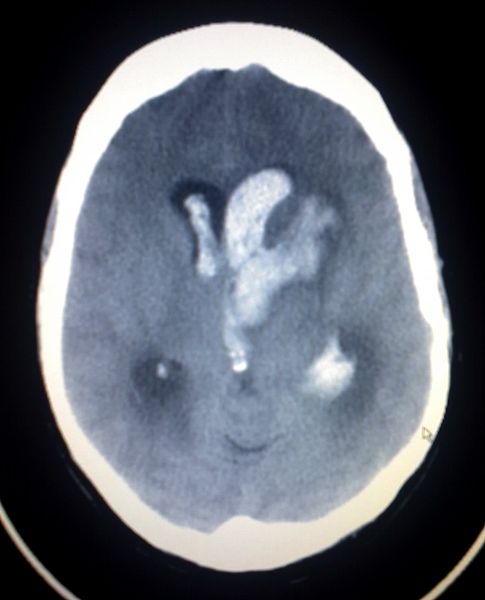Doctors may have found a way to dramatically improve survival rates for patients suffering from brain haemorrhages.
 Daniel Hanley and his colleagues at Johns Hopkins have taken the bold step of infusing a clot-dissolving agent called tPA (tissue plasminogen activator) into the heads of 52 patients who had suffered bleeding into their brain tissue. "We've gone from what's usually an 80% death rate in patients with this condition to an 80% survival rate," says Hanley.
Daniel Hanley and his colleagues at Johns Hopkins have taken the bold step of infusing a clot-dissolving agent called tPA (tissue plasminogen activator) into the heads of 52 patients who had suffered bleeding into their brain tissue. "We've gone from what's usually an 80% death rate in patients with this condition to an 80% survival rate," says Hanley.
Drugs like tPA are usually avoided in conditions that involve bleeding for fear that they might exacerbate the problem, but the Hopkins team set out to investigate whether very low doses, administered not into the blood stream but directly into the cerebrospinal fluid that bathes the brain, might be a safe way to tackle the problem of brain haemorrhage.
Bleeds into the brain are so often fatal because the blood forms clots inside the fluid spaces, called ventricles, inside the brain, impeding the flow of cerebrospinal fluid and causing swelling. This, in turn, applies dangerous pressure to the brain, whilst other factors also present in the blood trigger blood vessels to go into spasm, which can further compound the damage. Dissolving the clot is therefore a priority, but difficult to achieve safely.
In the trial the patients were given one of three different doses of tPA every 12 hours and followed up using daily CT scans. On average the patients receiving the highest dose of the drug cleared their blood clots three times faster than patients who received just supportive care, and about a day faster than the patients receiving the two lower tPA doses.
Reassuringly, the patients on the clot-busters were no more likely to suffer additional bleeding than supportively-managed cases. One month post-treatment more than 80% of the treated patients were still alive and 10% of them had even managed to return to work. The team now plan to set up a much larger trial involving 500 patients to test the benefits of their approach more stringently, although they are highly optimistic about the results.
"We think that this treatment is the most promising story in brain haemorrhage in many years," says Hanley. "We've taken a condition that used to have an extremely high death rate and disability and turned it around."










Comments
Add a comment